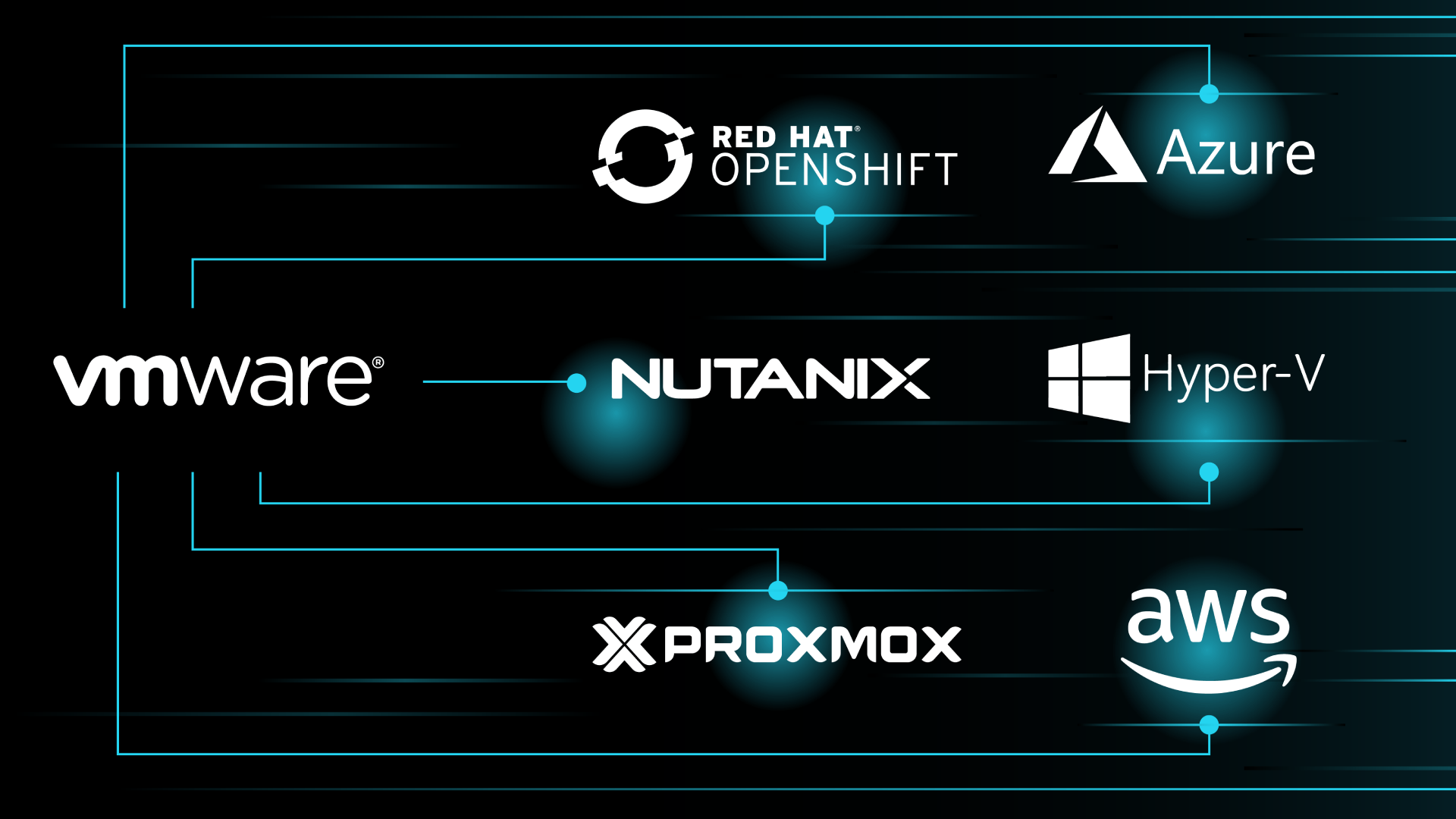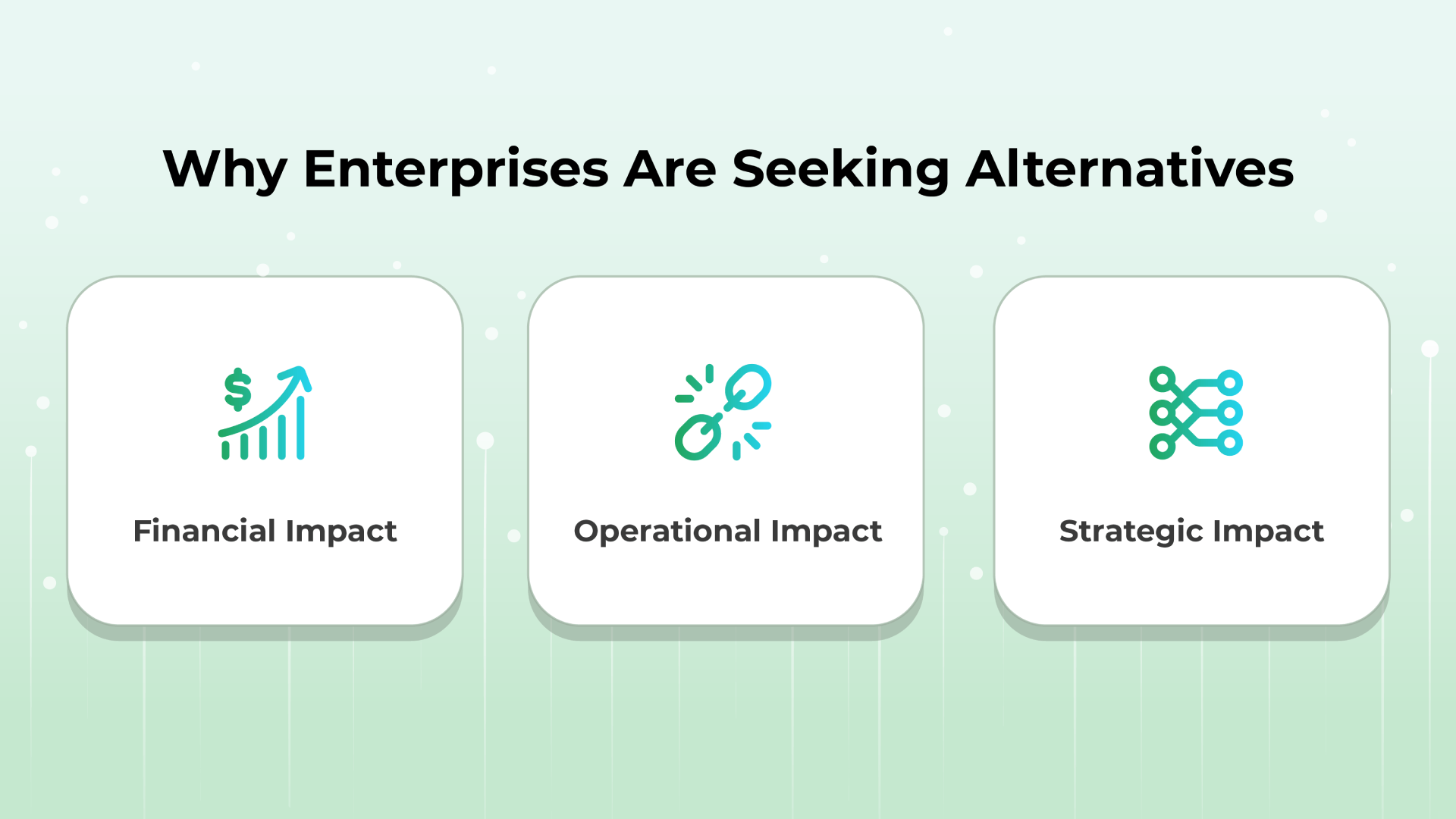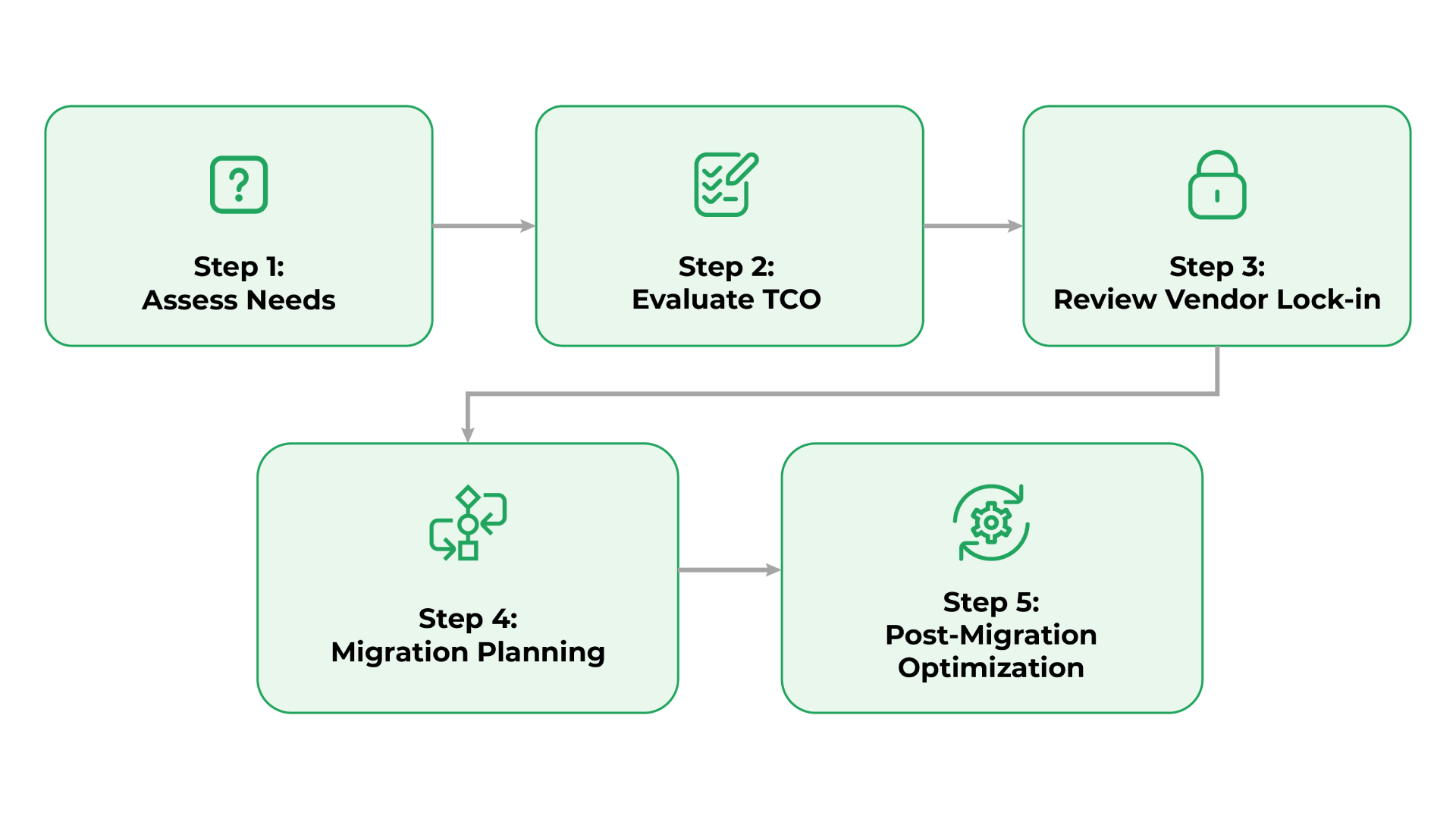The Broadcom acquisition of VMware and its shift to a subscription licensing model have driven enterprises to seek cost-effective, scalable virtualization alternatives. Rising costs, disrupted support channels, and product uncertainty are key motivators. Red Hat OpenShift Virtualization offers a unified, cloud-native platform for managing VMs and containers, while VergeOS delivers a simplified hyperconverged infrastructure with low TCO and scalable deployment. Other options include Proxmox VE, Microsoft Hyper-V, and OpenStack. Enterprises should evaluate cost, workload profile, cloud/on-prem needs, and vendor lock-in. Gruve.ai supports this transition with assessments, migration planning, execution, and managed services, enabling enterprises to modernize infrastructure efficiently and securely.

A VMware-sized Dilemma: Why Enterprises Are Seeking Alternatives?

For many years, VMware was the gold standard for enterprise virtualization. Its robust features and stability were unmatched. But, as the adage goes, change is the only constant. What was earlier indispensable gave way to its alternatives. The search for a VMware alternative began with the Broadcom acquisition in 2023. The shift from perpetual licenses to a subscription model created uncertainty. Some reports indicate price increases of 400% to 700% for some customers. This new model also consolidated products into bundles, forcing businesses to pay for features they did not need.
Let us look at the top three reasons that had enterprises searching for VMware alternatives:
- Rising Costs Under the New Licensing Model: Broadcom shifted from a license model to a subscription-based one for VMware products, blindsiding the finance departments of many organizations. For example, AT&T reported an annual price increase of 1,050%, while other reports from the European Cloud Competition Observatory cite an increase of 1,500%. The reason behind the spiralling costs is the increase in the minimum core count requirement from 16 to 72 cores for some customers. It is forcing companies to move from one-time capital expenditures (CapEx) to recurring operational expenditures (OpEx), complicating long-term budget planning.
- Disrupted Support and Sales Channels: Broadcom has terminated existing agreements with many VMware resellers and partners, moving to a smaller, invitation-only network. This has limited the channels through which customers can purchase new licenses, renew contracts, and receive support. The disruption affects everyone, from managed service providers (MSPs) to small and mid-sized businesses (SMBs), who rely on these smaller, regional partners for their virtualization needs.
- Unclear Future for Certain Products: Following the acquisition, Broadcom has streamlined VMware’s product portfolio, discontinuing some products and bundling others. The strategic shift has created uncertainty for enterprises that depend on these de-emphasized or discontinued products. The lack of a clear long-term roadmap for certain solutions has prompted companies to reassess their investment in the VMware ecosystem and explore alternative platforms with more predictable futures.
Gruve’s Recommended Virtualization Alternatives
Future-ready, cost-effective, and efficient virtualization is indispensable to modern IT operations. Recent industry reports claim an exponential increase in the global virtualization market, highlighting the increasing importance of flexible, high-performance virtualization platforms.
In response to rising customer needs for agility, efficiency, and scalability, we’ve formed collaborations with industry leaders whose platforms deliver strong results:
Red Hat
Red Hat offers a powerful, open-source approach to virtualization designed for the hybrid cloud. They provide a unified platform that expertly bridges traditional virtualization with modern container technologies, making it the perfect choice for organizations looking to modernize their infrastructure.
Red Hat OpenShift Virtualization
I. What it is: It is a core component of Red Hat OpenShift, an enterprise Kubernetes platform. It enables you to run virtual machines (VMs) and containers on the same platform.
II. Why it’s a Gruve recommendation: We recommend this solution because it’s a forward-thinking choice for businesses that want to modernize their applications. It eliminates the silo between VMs and containers, simplifying operations and providing a clear path to a cloud-native architecture.
III. Key features: It provides unified management of VMs and containers, is built on the secure and stable KVM hypervisor, and offers advanced automation capabilities with Ansible.
There are several benefits of choosing Red Hat OpenShift with OpenShift Virtualization over VMware. Let us discuss the benefits in detail below:
- Unified platform – Helps manage both containerized and virtual machine workloads on a single Kubernetes-based platform, unlike VMware’s separate virtualization-first approach.
- Lower licensing costs – OpenShift Virtualization is included with OpenShift subscriptions, reducing the need for additional expensive hypervisor licenses like VMware vSphere.
- Future-proof architecture – Supports modern application development with containers, microservices, and cloud-native workloads, while VMware is more VM-centric.
- Open-source flexibility – Built on Kubernetes and open-source technologies, avoiding vendor lock-in common with VMware.
- Cloud-native integration – Seamlessly integrates CI/CD pipelines, DevOps tooling, and container orchestration, enabling faster innovation.
- Operational efficiency – Simplifies management by using one platform for both legacy VMs and modern cloud-native apps, reducing infrastructure complexity.
- Portability across environments – Easily runs workloads on hybrid and multi-cloud setups (AWS, Azure, GCP, private data centres), unlike VMware, which often ties customers to its ecosystem.
- Better scalability – Designed for horizontal scaling and distributed architectures, making it ideal for modern enterprise workloads.
- Developer productivity – Provides self-service capabilities, automation, and streamlined deployment pipelines to accelerate time-to-market.
- Security & compliance – Built-in Kubernetes-native security features and Red Hat’s enterprise support help ensure trusted, secure environments.
Verge
Verge provides a hyperconverged infrastructure (HCI) solution that simplifies and streamlines your entire IT environment. Their platform is designed for ease of use and high performance, making it a compelling choice for businesses of all sizes.
Verge OS
I. What it is: Verge OS is an all-in-one HCI platform that combines compute, storage, and virtualization into a single, easy-to-manage solution.
II. Why it’s a Gruve recommendation: We recommend Verge for their approach to simplifying IT. Their platform reduces operational complexity and the total cost of ownership by eliminating the need for separate management of storage, networking, and virtualization components.
It offers the following advantages:
-
- Simplified, single-pane management: VergeOS bundles compute, storage, networking, and virtualization into a single unified software stack (“one UI/one API/one update”), eliminating multiple management consoles, APIs, and compatibility headaches, resulting in “one piece of software that virtualizes the entire data center.”
- Lower hardware entry and flexible scale-out: VergeOS, unlike legacy HCI, helps IT start small—two mid‑range servers or even shoebox‑sized edge nodes under 12 W—and scale up compute‑only and storage‑heavy nodes as needed.
- Rapid portability & consistent compliance: VergeOS wraps infrastructure and networking into portable Virtual Data Centers (VDCs), which can be cloned, moved, or replicated instantly, simplifying compliance assurance and multi‑tenant isolation.
- Cost-Effective: Verge’s pricing model can’t be beaten. It offers some of the lowest pricing in the Virtual Infrastructure Space for some of the most sophisticated capabilities.
III. Key features: Features include unified management, VSAN with NAS support, data protection (Anti-Ransomware capabilities are built in), built-in security, and seamless scalability to meet growing demands.
Other Solutions
While Gruve partners exclusively with Red Hat and Verge, other solutions exist in the market. There is no one-size-fits-all solution, and you must opt for a solution that addresses your unique requirements.
The platforms discussed below may offer suitable alternatives depending on your specific needs.
Proxmox VE
I. What it is: Proxmox VE is a complete open-source platform that combines the KVM hypervisor and LXC containers, creating a unified management system.
II. Why it’s an alternative: It offers an all-in-one solution for virtualization. Its web-based interface simplifies management. It is a cost-effective and efficient choice, thanks to its strong community for support.
III. Key features: Live migration, high availability, and built-in backup. It also supports software-defined storage with Ceph.
Microsoft Hyper-V
I. What it is: Hyper-V is a Type-1 hypervisor from Microsoft. It is included with Windows Server and allows users to create and manage virtual machines.
II. Why it’s an alternative: If your enterprise is already in the Microsoft ecosystem, Hyper-V is a logical choice. It offers seamless integration with Active Directory and System Center. The cost advantage can be significant.
III. Key features: Live migration, high availability, and network virtualization. It also has strong integration with Microsoft Azure for hybrid environments.
OpenStack
I. What it is: OpenStack is an open-source cloud computing platform. It is used for building and managing private and public clouds.
II. Why it’s an alternative: It offers a highly customizable private cloud solution and prevents vendor lock-in. OpenStack is used by some of the world’s largest enterprises.
III. Key features: Infrastructure-as-a-service (IaaS), extensive APIs, and a massive community.
How to Choose the Right Alternative: A Framework for Decision-Making

Selecting an alternative requires careful analysis. Use this framework to guide your decision:
1. Take a Quick VMware-to-AI Readiness Micro-Assessment Survey:
I. On-Premises vs. Cloud: Do you need to keep workloads on-premises? Or can you move to the cloud? Have an unambiguous answer before making any decision.
II. Workload Profile: What types of workloads do you run? Are they traditional VMs or a mix of VMs and containers?
III. Cost vs. Flexibility: Are you focused on cutting costs? Or do you need the flexibility of open-source?
2. Evaluate TCO (Total Cost of Ownership):
I. Licensing Costs: Compare subscription fees and one-time costs. It helps in making cost-effective and efficient choices.
II. Hardware Compatibility: Can you use your existing hardware? Or will you need new equipment? Migrating to new equipment without understanding your requirements can create more issues than solutions.
III. Training & Staffing: Does your team have the skills to manage the new platform? What are the training costs? A simple cost-benefit analysis will spotlight your needs and requirements.
3. Review Vendor Lock-in:
I. Proprietary vs. Open: A proprietary solution may offer tighter integration. An open-source solution provides more freedom.
II. Migration Complexity: How difficult will it be to move your workloads in the future?
Migration Planning & Implementation
Migration is a multi-step process. It requires careful planning and execution. Gartner estimates a migration can take 18 to 48 months.
- Discovery & Assessment: Inventory your current environment. Map application dependencies.
- Strategy & Planning: Choose a migration strategy. It may include re-hosting (lift and shift) or re-platforming.
- Pilot Migration: Test the migration on a small scale. Testing helps identify and fix issues early.
- Full-Scale Migration: Execute the migration in stages. Prioritize critical workloads.
- Post-Migration Optimization: Monitor performance and optimize costs.
How Gruve.ai Can Help
The transition from VMware is a major project. It can be complex and risky. Gruve.ai specializes in helping enterprises with this journey. We provide a full suite of services, which include:
- Strategic Roadmap Design: We help you define a strategic roadmap, helping you evaluate options and build a solid plan.
- Deep Assessment Services: We analyze your workloads and infrastructure. It helps us design the best migration strategy.
- Migration & Execution: Our experts manage the entire process, ensuring a seamless transition with minimal downtime and committing to a 100% data integrity.
- Managed Services: We provide ongoing support and optimization. Our team ensures your new environment runs smoothly. We have experience with Red Hat, OpenShift, and other top hypervisors.
Conclusion
Enterprises now have more choices than ever in virtualization. The 2023 acquisition of VMware by Broadcom broke VMware’s monopoly in virtualization. The increase in options vis-à-vis virtualization is an opportunity for businesses to innovate. They can lower costs and improve flexibility. The key is to adopt a comprehensive approach to the transition.
What should be your approach to bring verifiable results? Look beyond product swap. Consider the long-term impacts on your business. Whether you choose an open-source solution, an enterprise-grade platform, or a cloud-native approach, the right plan is essential. Gruve.ai is here to help you make this transition.
Go Gruve and embrace the change now!
FAQs
Q: Is it necessary to move away from VMware?
A: There is no one-size-fits-all answer to this question. The transition away from VMware depends on your business requirements. Many enterprises are leaving due to cost and licensing changes. If your current setup works and the new pricing is acceptable, you may choose to stay. However, change is the only constant. For most, exploring alternatives is a cost-effective business decision.
Q: What is the biggest challenge in migrating from VMware?
A: Migration is complex. The biggest challenges are application dependencies. It is also difficult to map out entire environments.
Q: How can I estimate the cost savings of a migration?
A: A detailed TCO analysis is required, which includes all costs. This includes licensing, hardware, staffing, and support. A successful migration can lead to significant savings. Some companies report a 40-60% reduction in TCO.
Q: What are Gruve’s recommended VMware alternatives?
A: Red Hat OpenShift Virtualization (for running VMs + containers on one Kubernetes platform) and VergeOS (a simplified hyperconverged stack with unified compute, storage, networking, and virtualization).
Q: When should I choose OpenShift Virtualization vs. VergeOS?
A: Pick OpenShift Virtualization if you’re modernizing apps toward cloud-native with CI/CD and DevOps. Choose VergeOS if you want one UI, low TCO, easy scale-out, and rapid deployment across edge/core data centers.
Q: How does Gruve help implement these platforms?
A: We deliver assessment → pilot → phased migration → optimization, ensuring minimal downtime, strong security/compliance, and measurable cost savings with ongoing managed services.

